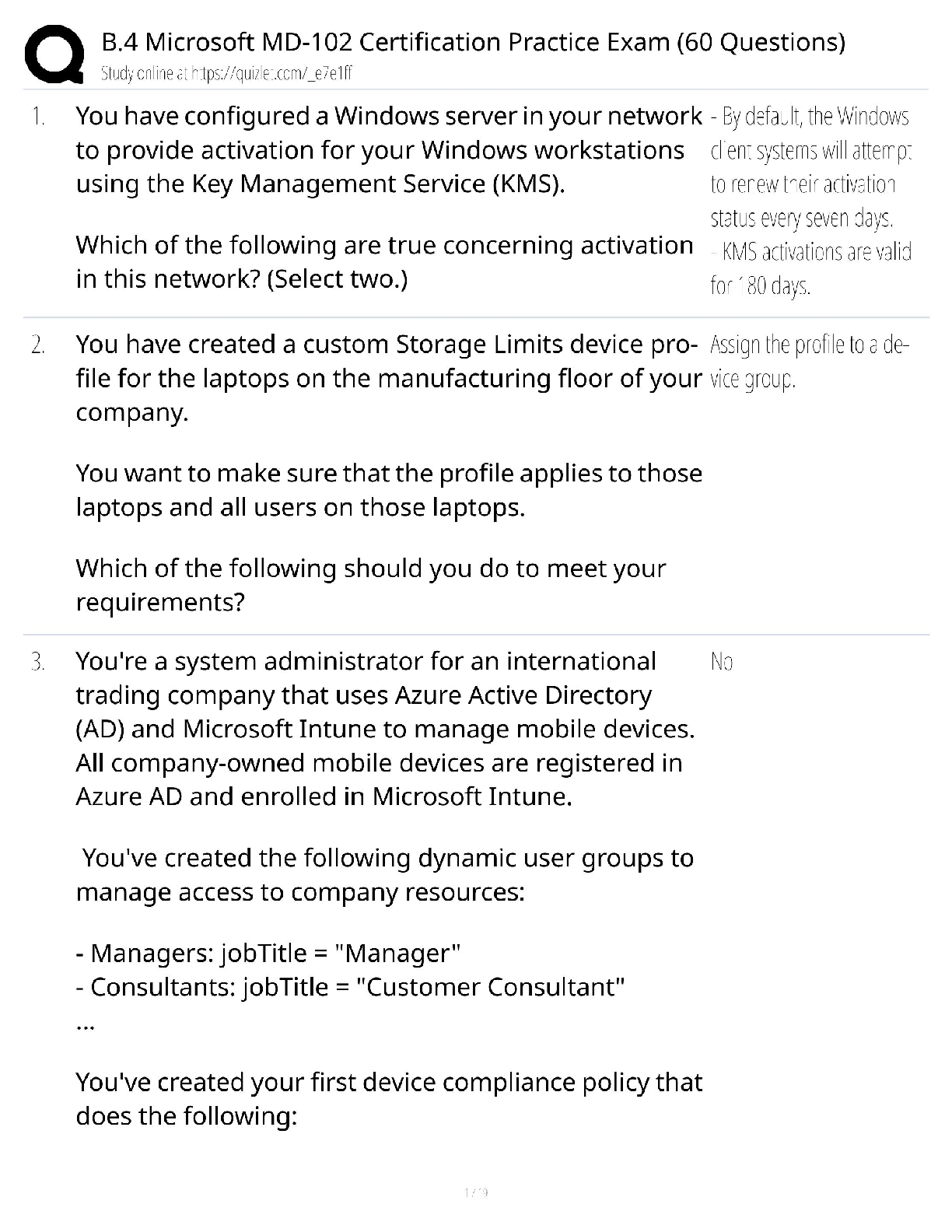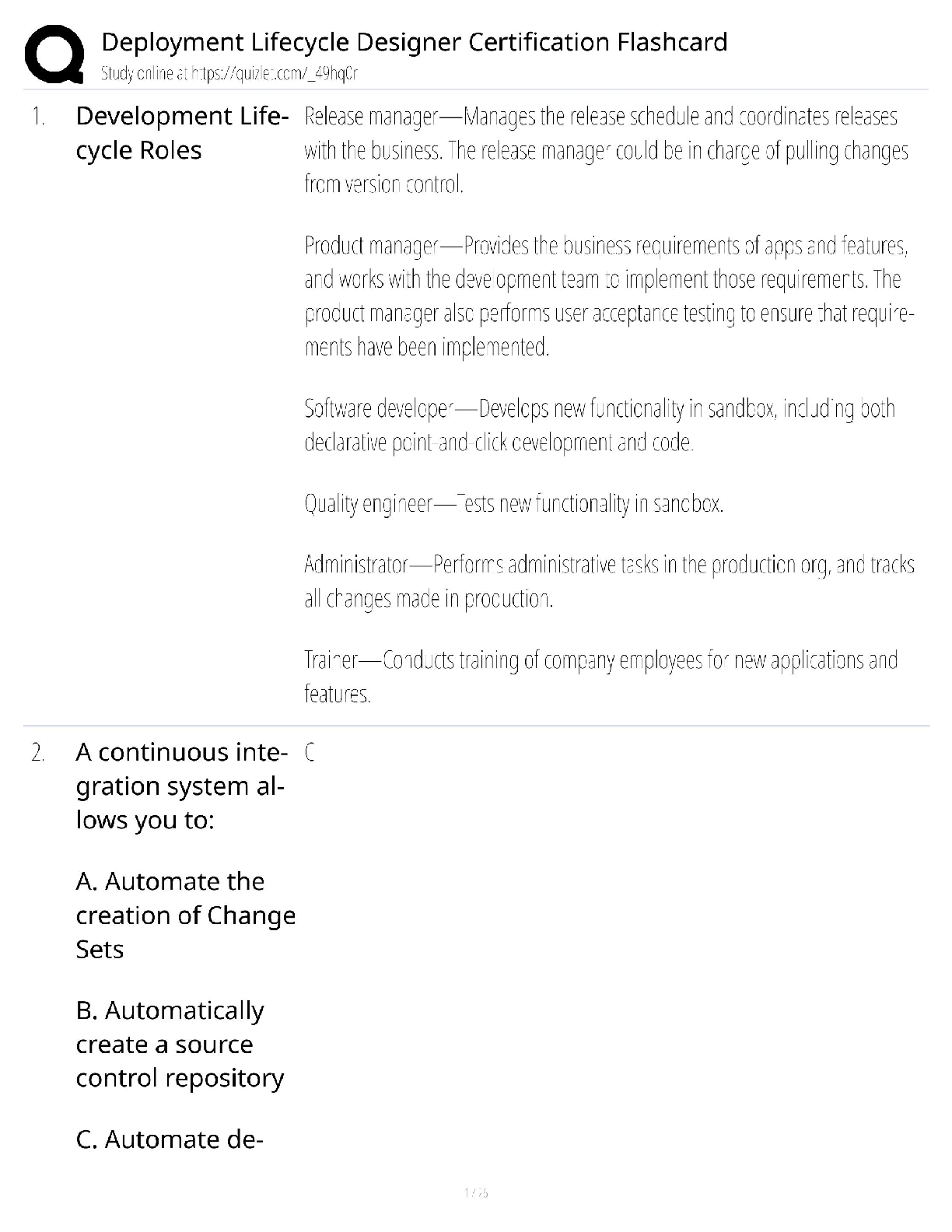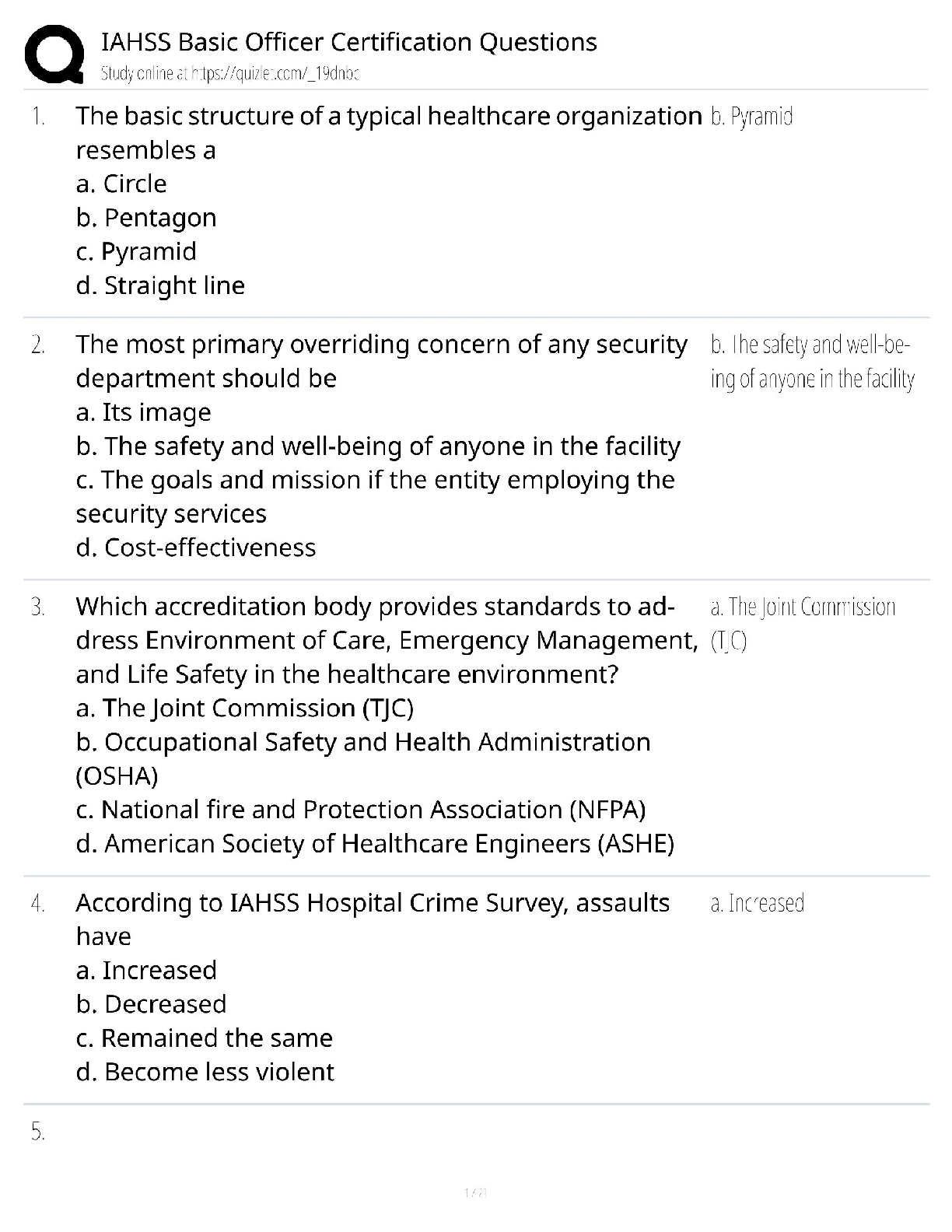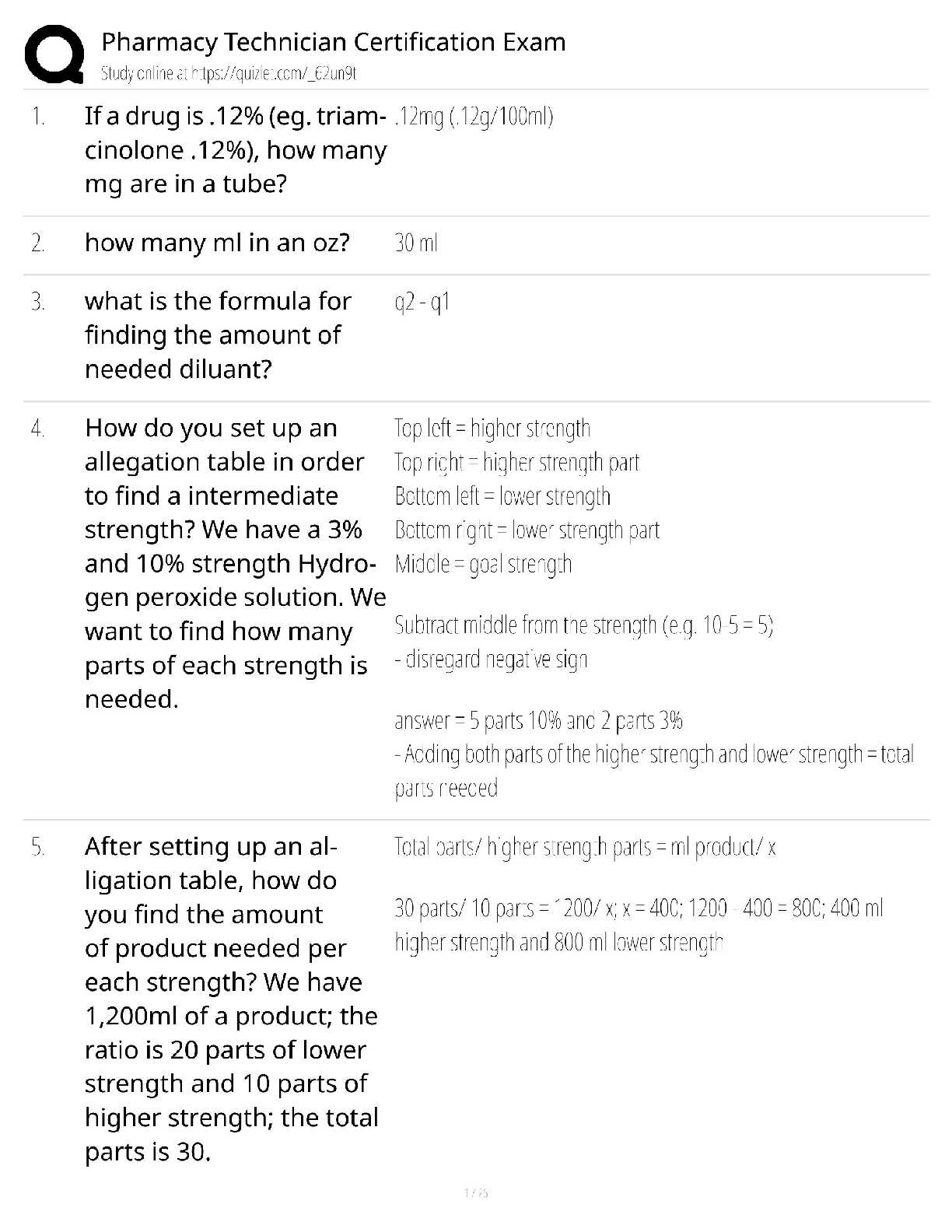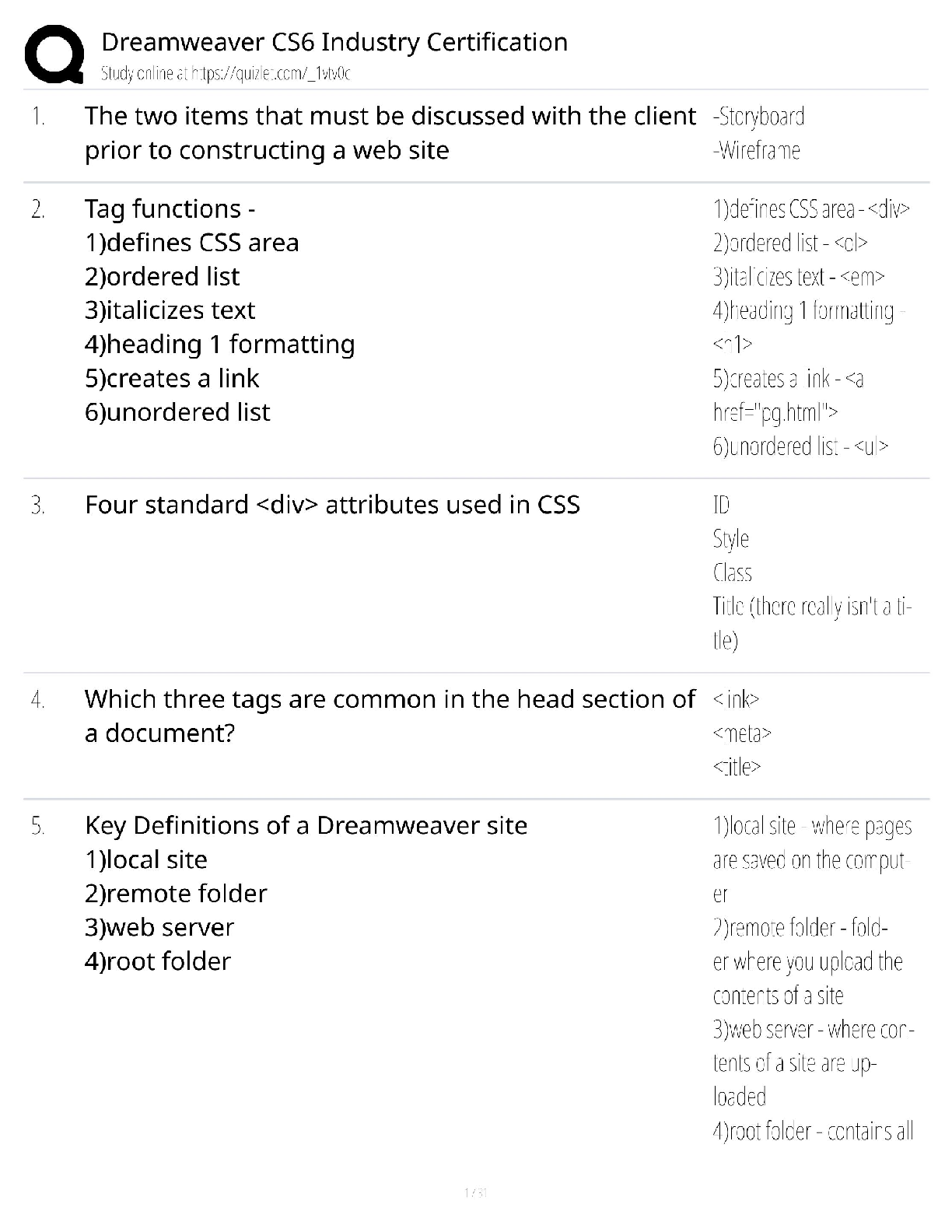Counseling > QUESTIONS & ANSWERS > CADC Questions and Answers 100% Pass (All)
CADC Questions and Answers 100% Pass
Document Content and Description Below
CADC Questions and Answers 100% Pass ASAM ✔✔American Society of Addiction Medicine Prefrontal Cortex ✔✔The part of the brain that enables us to assess situations. This part of the brain is ... still maturing during adolescence. Moral Model ✔✔Addictions are the result of human weakness, character defects. This model has no sympathy for people with serious addictions believing that the addict demonstrated a great moral failure. Focuses on believing the addict has a "choice" Disease Model ✔✔addiction is an illness. Comes as a result of the impairment of healthy neurochemical or behavioral processes. Jellinek is a pioneer of this model. Genetic Model ✔✔Individuals have a genetic predisposition to certain behaviors. Cultural Model ✔✔Culture is a strong determinant of whether or not individuals may become addicts. Blended Model ✔✔Considers elements of all other models. Dependency is different for different individuals and each case should be considered on an individual basis. The Brains Mesolimbic System ✔✔Alcohol and drug significantly affect the reward/pleasure centers in this. Plays a large part in experiencing pleasure. Dopamine ✔✔the neurotransmitter related to pleasure Alcohol ✔✔The most widely used and abused substance. A CNS depressant. Marijuana ✔✔The most common illicit drug used. THC acts on cannabinoid receptors that influence pleasure, memory, thinking, concentration. Nucleus Accumbens ✔✔The brains pleasure center, neurons in the nucleus accumbens use dopamine. Every drug of abuse stimulates dopamine release. ROSC's ✔✔Recovery Orientated Systems of Care: Distinctive emphasis on post treatment monitoring and support Dimensions included in an effective ROSC ✔✔Health, Home, Purpose, community, Three Core Components of a ROSC ✔✔Collaborative decision-making (individuals are empowered to direct their own recovery) Continuity of services (ongoing and seamless connections with services and supports) Service quality (services are evidence based and appropriate towards the individual) Recovery Management ✔✔a term being used to encompass continuity of care (time sustained recovery focused collaboration between service consumers and providers) Physical Recovery Capital ✔✔made up of physical and human recovery capital. Physical recovery capital includes physical health, financial assets, clothing, food, shelter. Human recovery capital includes values, knowledge, education, communication skills. Family/Social Recovery Capital ✔✔grounded in interpersonal relationships between the person in recovery and the people in their family that support recovery efforts. Community Recovery Capital ✔✔a reflection of the environment where the person in recovery lives. It encompasses community attitudes towards addiction, local rules and policies, and resources available [Show More]
Last updated: 3 years ago
Preview 1 out of 10 pages
.png)
Buy this document to get the full access instantly
Instant Download Access after purchase
Buy NowInstant download
We Accept:

Also available in bundle (1)
Click Below to Access Bundle(s)
.png)
CADC Bundled Exams with complete solution
CADC QUIZ BANK 2022 WITH COMPLETE SOLUTION CADC Practice Exam Questions (Test 2) Answered correctly 2022 CADC exam (practice test 2022 answered correctly)All CADC possible questions CADC 2022 Practice...
By Nutmegs 3 years ago
$18.5
17
Reviews( 0 )
$10.00
Can't find what you want? Try our AI powered Search
Document information
Connected school, study & course
About the document
Uploaded On
Sep 26, 2022
Number of pages
10
Written in
All
Additional information
This document has been written for:
Uploaded
Sep 26, 2022
Downloads
0
Views
136


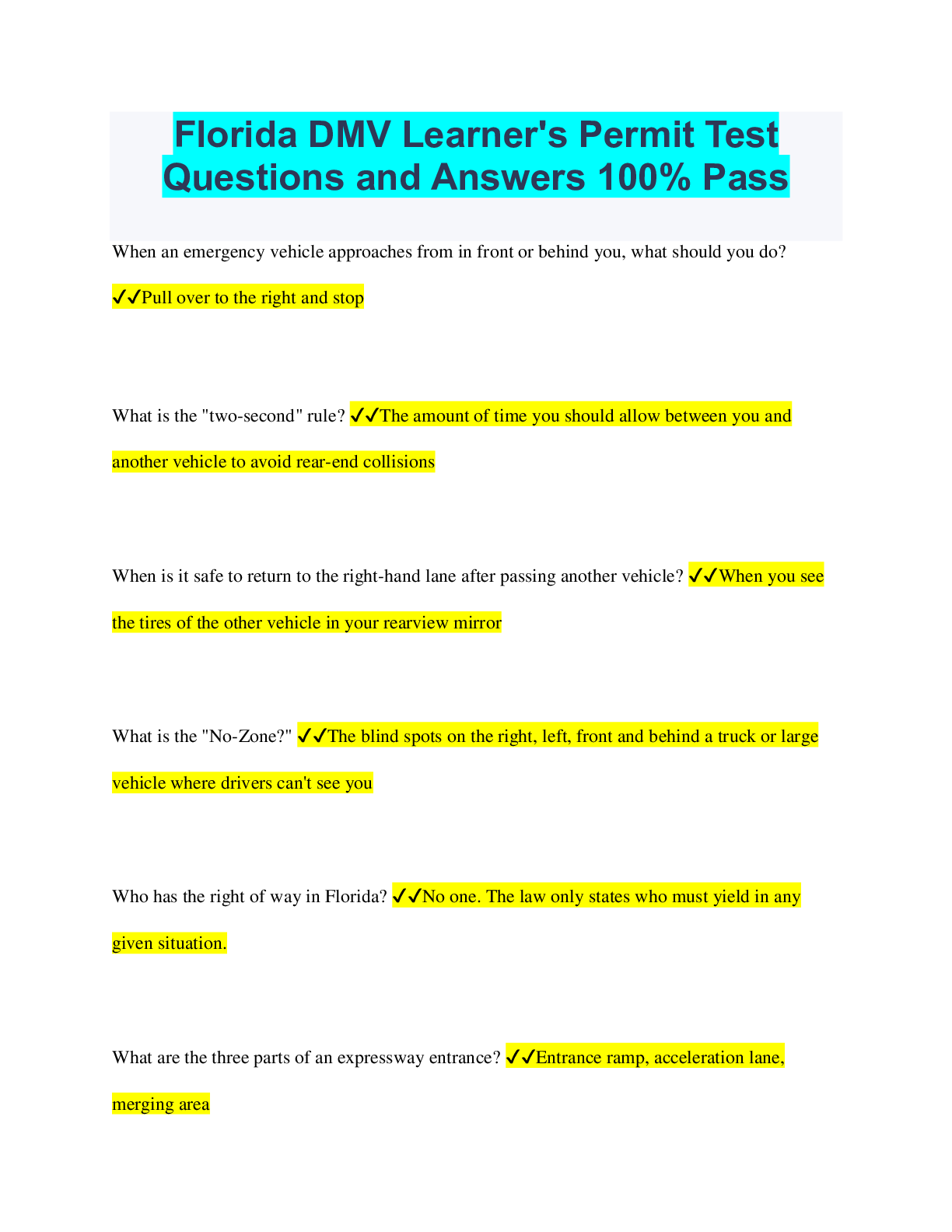
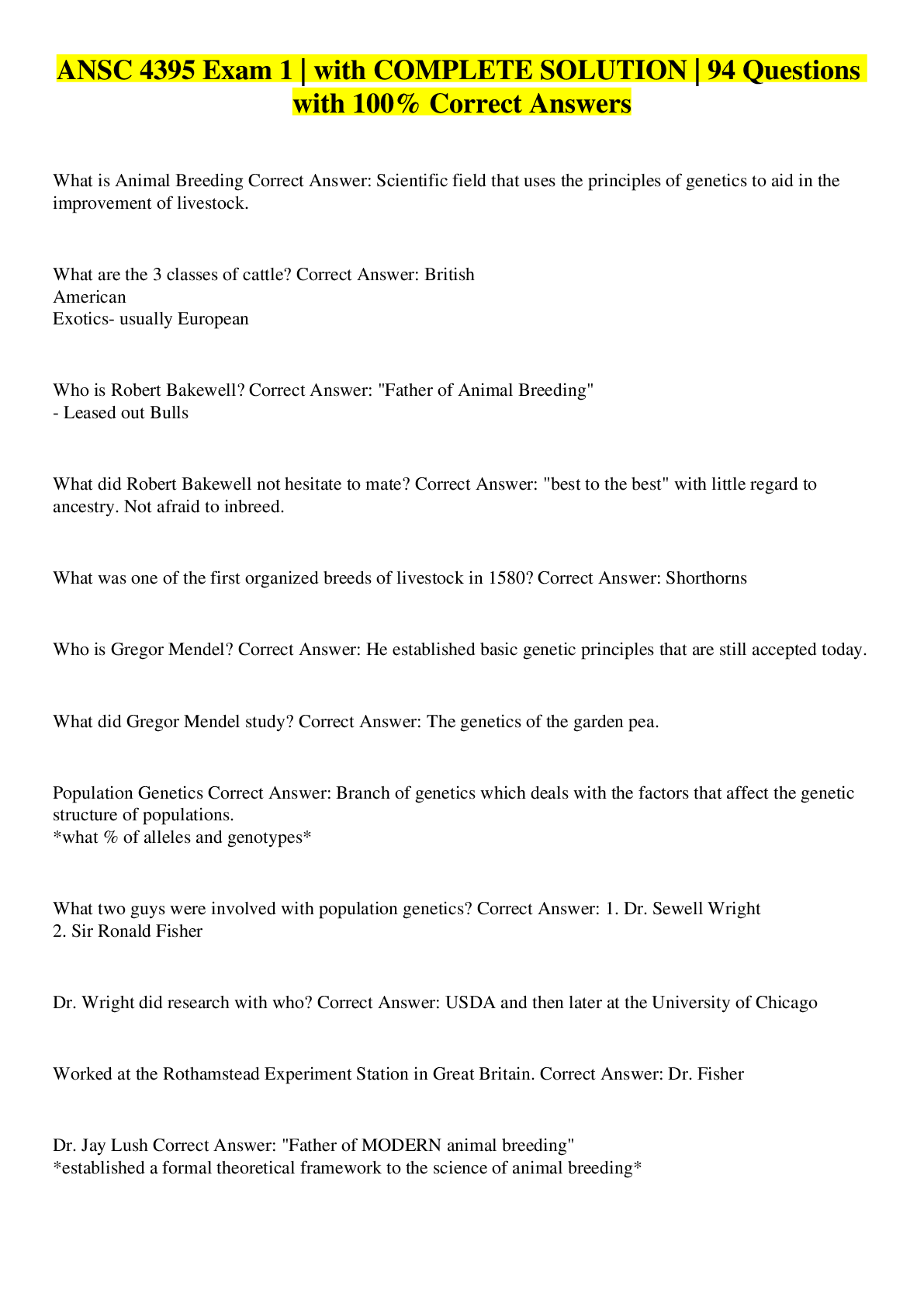

.png)








